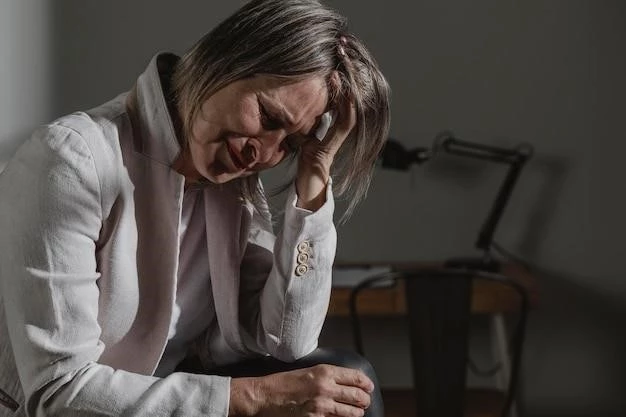Introduction
Pyrophobia is the persistent and intense fear of fire․ It can cause anxiety, panic attacks, or an avoidance of any situation with the potential for fire․ This phobia can impact daily life in unexpected ways, affecting individuals both mentally and emotionally․
Definition of Pyrophobia
Pyrophobia is a specific phobia characterized by an irrational, persistent, and intense fear of fire and flames․ Individuals with pyrophobia may experience overwhelming anxiety, panic attacks, or an avoidance of situations involving fire․ This fear can stem from various factors, including traumatic experiences or a predisposition towards developing phobias due to genetic and environmental influences․
Some may find their fear of fire debilitating, impacting their daily lives and relationships․ Understanding the definition of pyrophobia is crucial in recognizing the symptoms and seeking appropriate treatment and support․

Symptoms and Effects
Pyrophobia can cause overwhelming anxiety and dread related to fire․ It may lead to avoidance behaviors, panic attacks, and difficulties in daily functioning․ Understanding the symptoms and effects of this phobia is crucial to provide appropriate support and treatment․
Impact on Daily Life
Pyrophobia, an intense fear of fire, can lead to avoidance behaviors affecting daily activities․ Individuals may experience anxiety, panic attacks, and difficulty in handling situations involving fire․ The fear of fire can disrupt relationships, work, and everyday tasks, impacting mental well-being and overall quality of life․
Physical Symptoms
Pyrophobia, an intense fear of fire, can manifest in physical symptoms such as rapid heartbeat, sweating, trembling, and shortness of breath when exposed to fire-related stimuli․ Individuals may also experience nausea, dizziness, chest pain, and feelings of impending doom in fire-related situations․ Understanding these physical reactions is crucial in diagnosing and treating pyrophobia effectively․
Causes
Pyrophobia can be triggered by traumatic experiences related to fire, genetics, and environmental factors․ Individuals with a history of burn injuries, fire accidents, or exposure to wildfires may develop pyrophobia․ Understanding the causes is crucial in addressing and treating this intense fear of fire․
Traumatic Experiences
Pyrophobia can stem from traumatic experiences linked to fire, such as burn injuries, accidents, or exposure to wildfires․ These events can lead to an intense fear of fire and flames, resulting in persistent anxiety and avoidance behaviors․ Understanding how traumatic experiences contribute to pyrophobia is essential in addressing and treating this phobia effectively․
Genetics and Environment
Pyrophobia can arise from a combination of genetic predispositions and environmental factors․ Individuals with a family history of anxiety disorders or phobias may be more susceptible to developing pyrophobia․ Additionally, traumatic experiences related to fire can play a significant role in triggering and reinforcing this fear․ Understanding the interplay between genetics and the environment is crucial in comprehending the development of pyrophobia․

Diagnosis
Diagnosing pyrophobia involves recognizing the intense fear and anxiety related to fire․ Understanding the psychological and physical manifestations is essential for a medical evaluation․ It is crucial to differentiate pyrophobia from other phobias to provide the most effective treatment and support․
Recognizing Pyrophobia
Pyrophobia is characterized by an intense fear of fire, leading to anxiety, panic attacks, and avoidance behaviors․ Individuals may exhibit specific responses when faced with fire-related stimuli․ Recognizing these symptoms is essential for identifying pyrophobia and initiating appropriate interventions to help individuals overcome their fear of fire․
Medical Evaluation
Diagnosing pyrophobia involves a medical evaluation to assess the fear of fire and its impact on an individual’s life․ Healthcare providers may conduct psychological assessments and physical examinations to understand the severity of symptoms and rule out other conditions․ Identifying pyrophobia through a comprehensive medical evaluation enables healthcare professionals to tailor treatment strategies to address the specific needs of individuals experiencing this phobia․
Treatment
Therapeutic options such as cognitive-behavioral therapy and exposure therapy can help individuals overcome pyrophobia․ Medications like anti-anxiety drugs may also be prescribed․ Seeking professional help and building support systems are vital in managing and alleviating the fear of fire․
Therapy Options
Pyrophobia treatment often includes cognitive-behavioral therapy, exposure therapy, and relaxation techniques to help individuals manage their fear of fire․ Therapy aims to change thought patterns and behaviors related to fire, gradually reducing anxiety and avoidance behaviors․ Combining these therapeutic approaches can empower individuals to confront and overcome their phobia, leading to improved quality of life and mental well-being․
Medication
While therapy is a primary treatment approach for pyrophobia, medications like anti-anxiety drugs may be prescribed to manage symptoms․ These medications can help reduce anxiety levels and support individuals in engaging with therapy effectively․ However, medication should always be used in conjunction with therapy for optimal results in treating pyrophobia․
Coping Mechanisms
Building support systems with friends, family, or support groups can help individuals facing pyrophobia․ Self-help strategies like relaxation techniques, mindfulness practices, and gradual exposure to fire-related stimuli can empower individuals to manage their fear and enhance their emotional well-being․
Support Systems
Building support systems is crucial for individuals coping with pyrophobia․ Friends, family, or support groups can provide understanding, encouragement, and a sense of community․ Connecting with others who share similar experiences can offer emotional support and reassurance, empowering individuals to navigate their fear of fire and work towards overcoming it․
Self-Help Strategies
Self-help strategies can complement professional treatment for pyrophobia․ Techniques such as mindfulness, relaxation exercises, deep breathing, and gradual exposure to fire-related stimuli may empower individuals to cope with their fear․ Developing self-awareness and implementing these strategies can contribute to effectively managing pyrophobia and reducing its impact on daily life․
